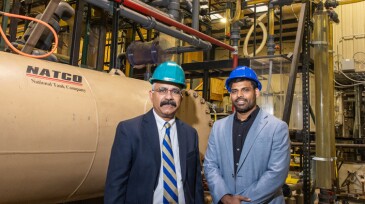Production
Allison Taylor, SPE, is studying whether nanogels can improve how gas, specifically CO2, is stored underground during CO2 flooding operations.
Researchers at KAIST developed an integrated chemobiological platform that converts renewable feedstocks like glucose and glycerol into essential aromatic hydrocarbons (BTEX) using engineered E. coli strains and a solvent-integrated catalytic process, offering a sustainable alternative to petroleum-based production.
Russia’s invasion of Ukraine reignited global interest in nuclear power, driving up uranium demand and prices as nations prioritized energy security and low-carbon reliability amid growing supply and geopolitical challenges.
-
The trips will tour THUMS Island, SoCalGas, and the Salton Sea geothermal fields.
-
The grant from the US Department of Energy will fund the project through 2027 as two researchers focus on developing a two-step approach to treating produced water.
-
Finalists will present their technologies before the judging panel on 24 March, and the recipient of the award will be announced 25 March during the SPE/ICoTA Well Intervention Conference and Exhibition.
-
In our daily lives we come into contact with porous media whether it be a pumice stone, a cup of coffee, or a pile of clothes. In this article, we present three everyday examples of how reservoir engineering skills can be utilized in porous media.
-
Young professionals in New Zealand have unique opportunities to shape the future of the energy industry by driving innovation, influencing policy, and advancing a sustainable, low-carbon economy.
-
Join TWA Editorial Board member Md Imtiaz as he interviews ONGC’s Western Offshore Asset Executive Director Ravi Shankar.
-
Explore the methodologies, field applications, design optimization, and environmental challenges of fishbone drilling and how it can be used in both conventional and renewable energy systems.
-
As video game technology has evolved, so have the ways in which this technology can be used in the oil and gas industry.
-
The SPE IOR-EOR Terminology Review Committee has released its recommendations for the use of IOR, EOR, and newly introduced term, assisted oil recovery (AOR).
-
Tune in 28 October for a discussion with SPE Technical Directors about the future of data science for professionals in the energy sector.












